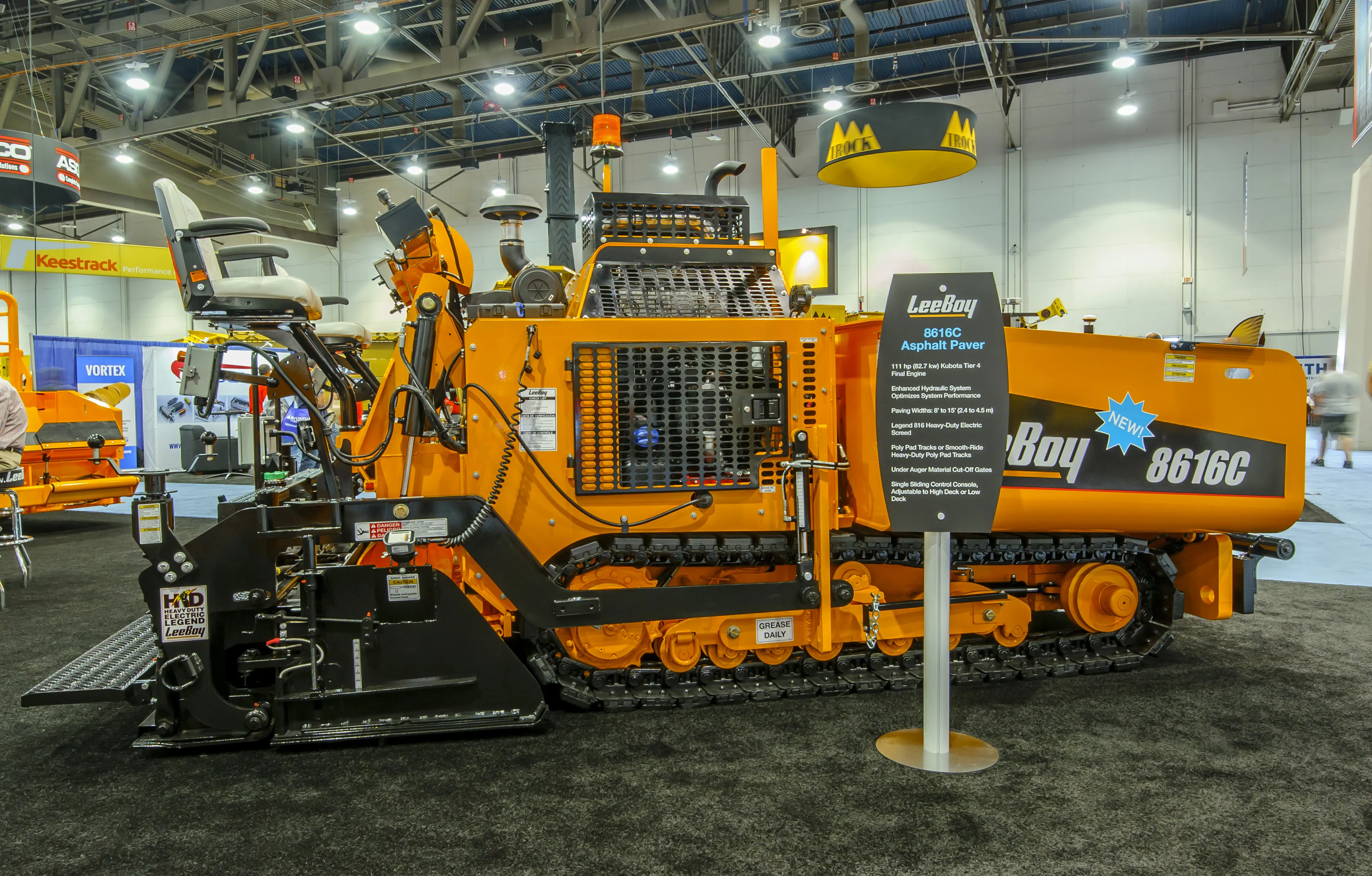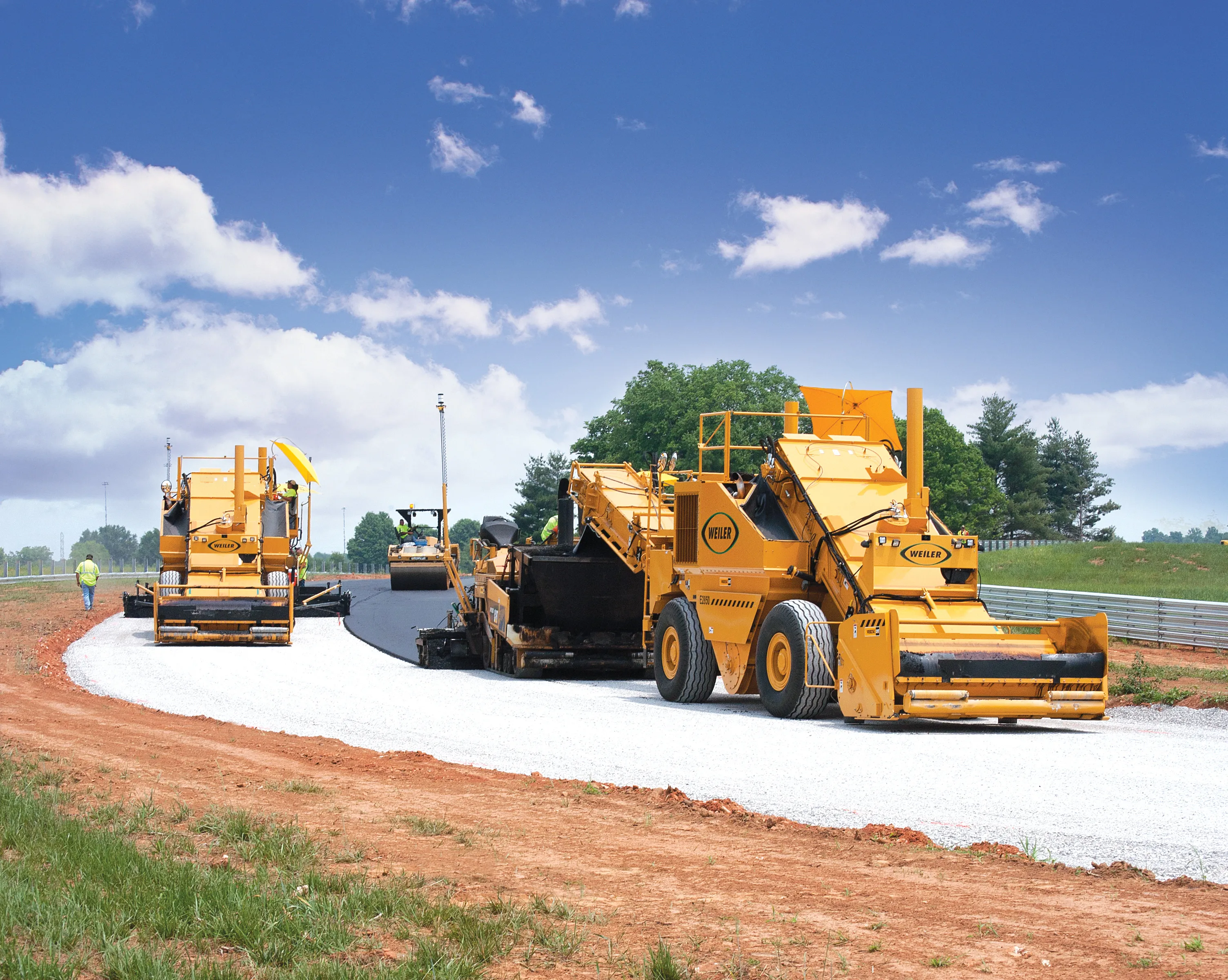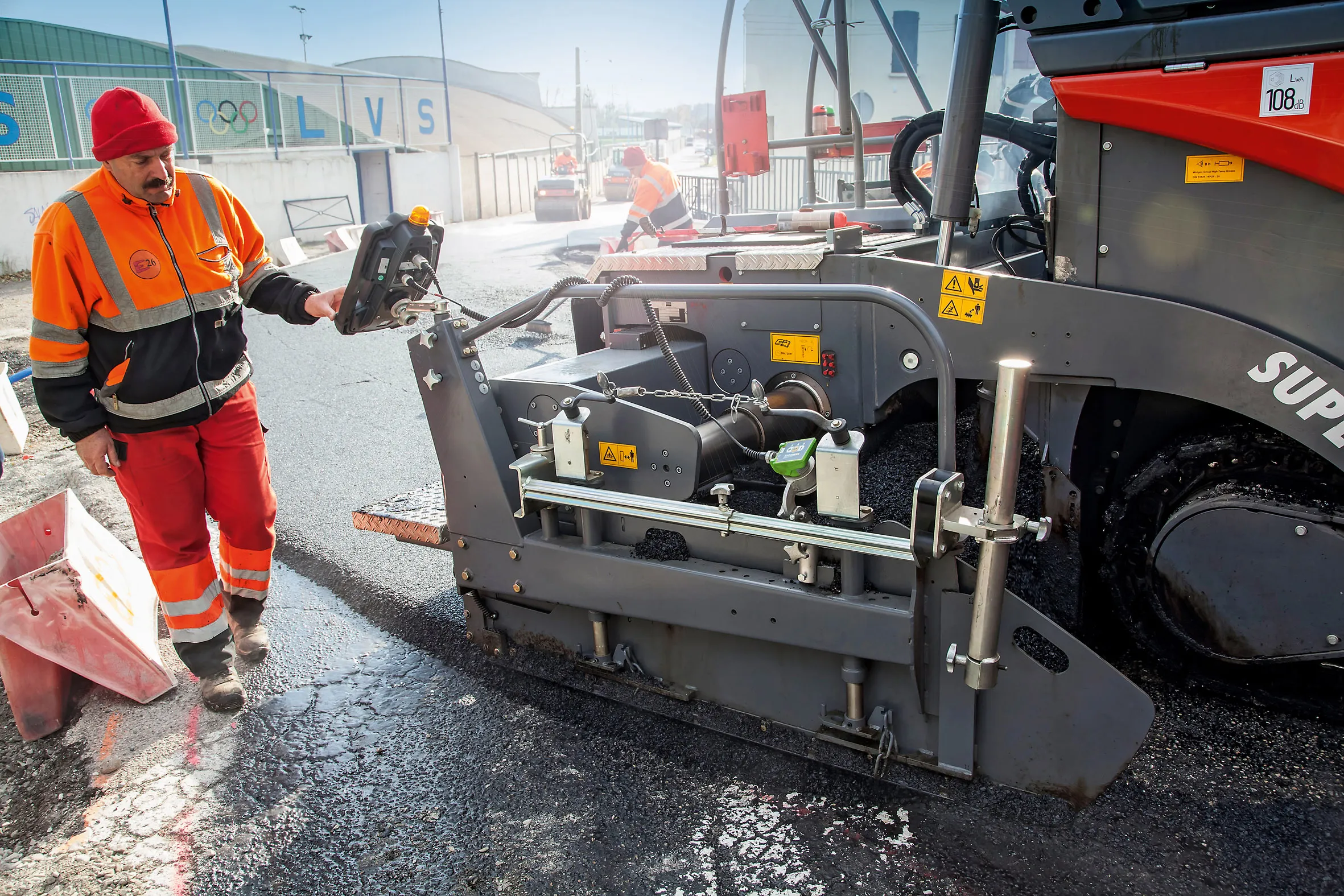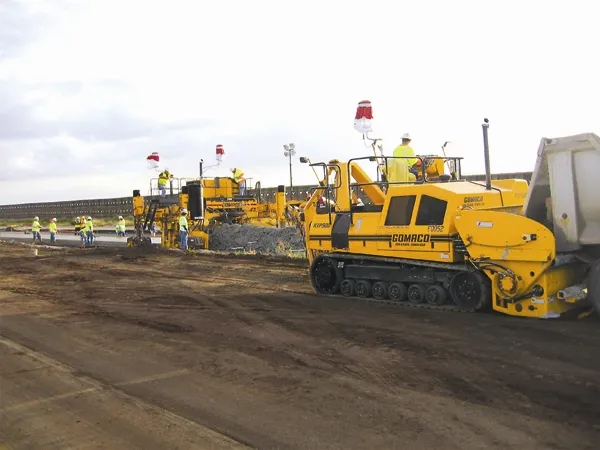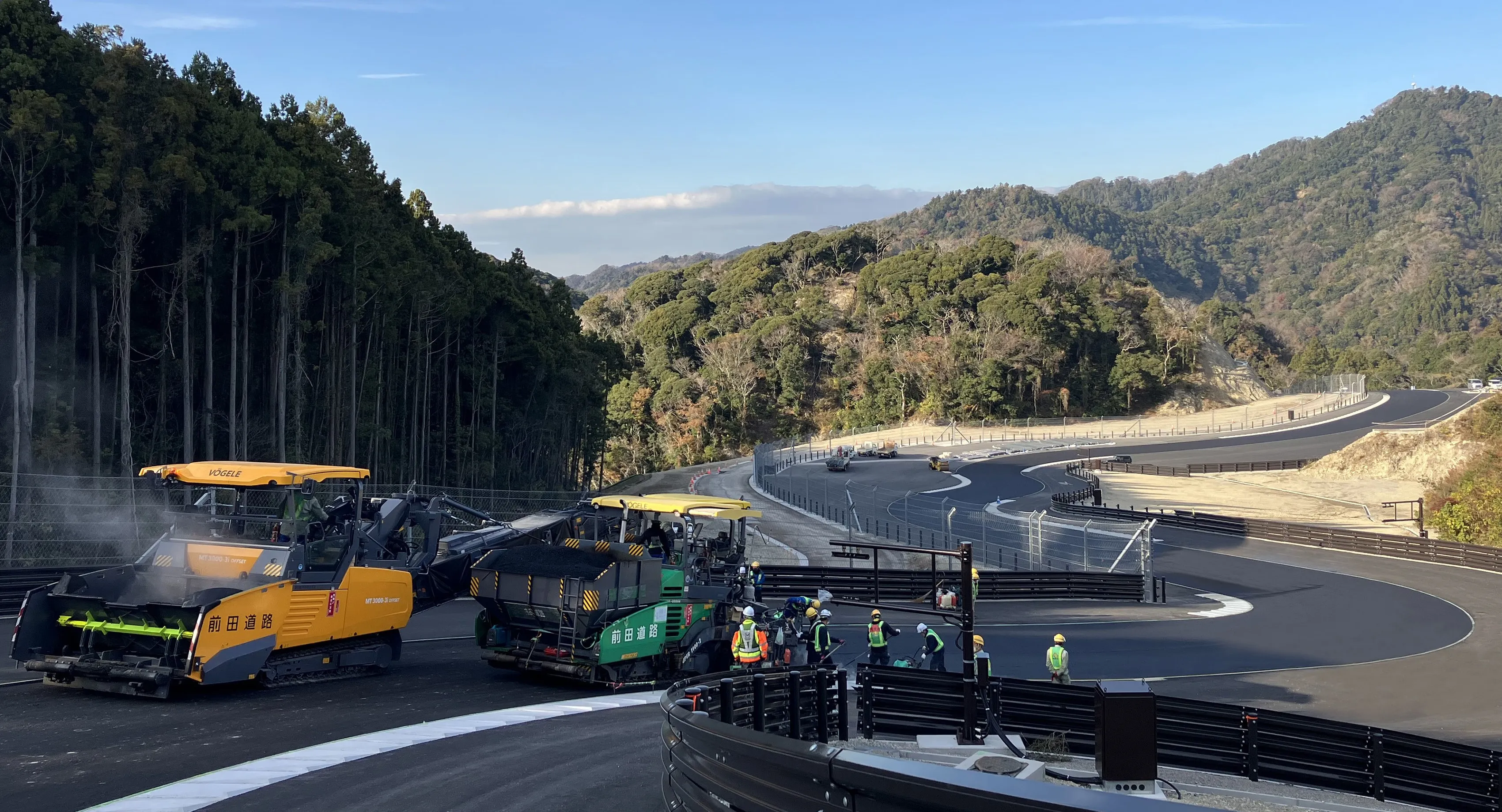
Road construction machines from the Wirtgen Group have been used to build a new race track in Japan. Four Vögele asphalt pavers worked on the project to build a demanding circuit in a mountainous area in Japan.
Tight corners and uphill gradients of up to 19% are features of the private racing circuit. Three Vögele pavers, a SUPER 1800-3i, a SUPER 1803-3i and a SUPER 1900-2, paved almost 100,000m2 in four layers, while a MT 3000-3i offset material feeder was also used to ensure efficiency and quality.
The race track was commissioned by CORNS & Company and is located around 70km from Tokyo, close to the town of Minamiboso. The facility has been constructed for use by for sports car enthusiasts and is Japan’s first race track for customers with their own vehicles. The 3.5km circuit features steep downhill gradients of up to 16% and uphill gradients of as much as 19%. The longest straights extend for 800m, allowing for high speeds. The track also features chicanes as well as tight bends with a 14m radius.
Maeda Road Construction used the four Vögele machines to manage the challenging new-build. The three pavers paved four layers totaling just under 100,000m²: an 180mm non-bonded base course, a 120mm bonded base course, a 60mm binder course, and a 40mm surface course. In addition to the racing circuit covering an area of 36,000m², paving work involved another 60,000m² of run-off zones, as well as the pit lane and service roads. The main paving works on those secondary areas, as well as the base courses, were handled by the SUPER 1900-2 paver, which the general contractor has been using for many years.
The pavers worked mainly hot to hot, using two machines in echelon at a slight offset to produce an asphalt surface without joints and measuring 8-12m across the full width of the carriageway. This ensures that the carriageway has both high resistance to deformation and a long service life. The paving team also benefited from the different undercarriage concepts. The SUPER 1800-3i tracked paver provides high traction, and maintains consistent straight-line travel, while the SUPER 1803-3i wheeled paver can be used to pave corners with a tight radius, as its undercarriage enables it to steer smoothly. The paving team took advantage of these benefits and primarily deployed the SUPER 1803-3i on the insides of bends.
The MT 3000-3i offset material feeder also played a key role in ensuring high quality paving. The machine decouples the transfer of material from the truck to the paver to ensure a constant, efficient paving process. Conical augers in the receiving hopper of the material feeder convey the material crosswise to render it thermally homogeneous. With an effective heating system that heats the conveyor and the transfer points, the use of a material feeder counteracts cooling and segregation of the mix.
The offset feature of the machine was also of benefit for the job, with the height-adjustable conveyor able to pivot 55° to the left and right. The discharge point into the extra material hopper of the SUPER paver is at a height of up to 3.6m as standard, and optionally up to 3.9m. Despite the extreme grade and slope, the pivoting conveyor meant that on the race track job site the MT 3000-3i Offset could continuously feed two pavers with material alternately, without having to manoeuvre constantly. This increased efficiency, as well as paving quality.


